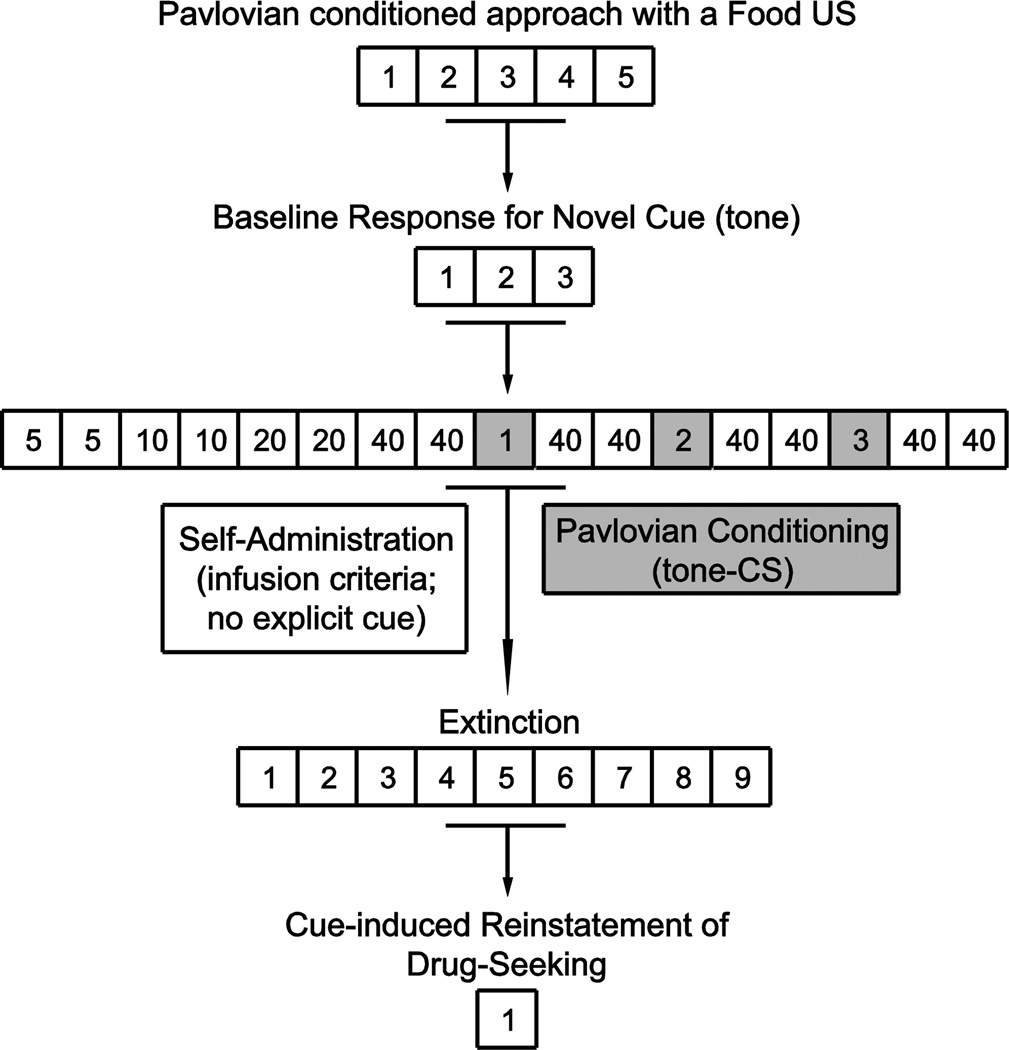Figure 1.
Schematic illustration of the experimental design for Experiment 1. Each numbered box represents an individual session/day. Following Pavlovian training with a food unconditioned stimulus (US) and lever (CS), rats were classified as STs or GTs and then tested for responses for a novel cue (tone). Next, they were trained to self-administer cocaine (US) in the absence of any explicit cue. During subsequent Pavlovian conditioning sessions (grey), rats received non-contingent tone (CS)-cocaine (US) pairings. Following cocaine self-administration and Pavlovian conditioning, all animals underwent extinction training followed by a cue-induced reinstatement of drug-seeking test. Depending on the experimental stage, an active nose poke produced the cocaine-US (self-administration), no US (extinction), or the CS but no US (reinstatement).

